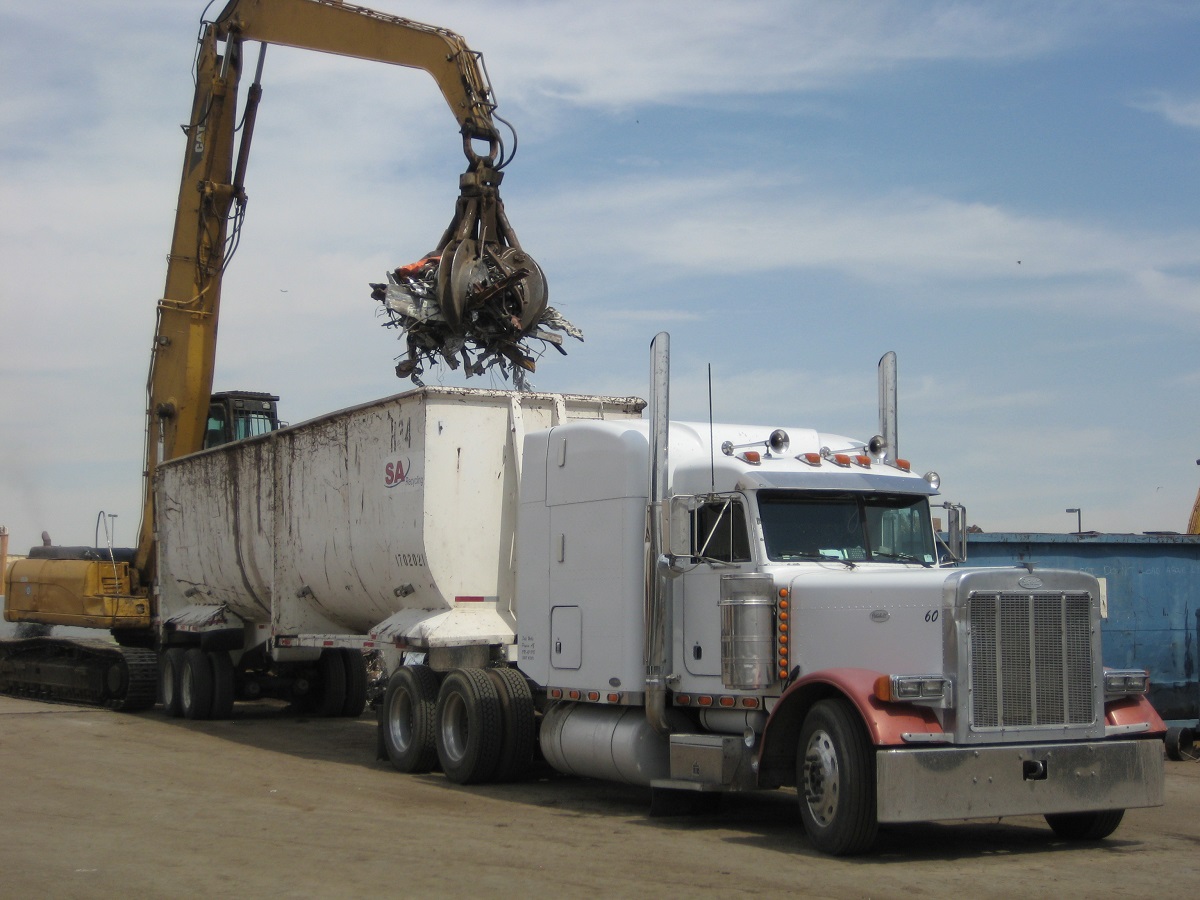Though potentially aggravated by the COVID-19 pandemic, the U.S. trucking shortage is real and has been a growing concern for years. “[We] first quantified the shortage in 2005, but according to our last Driver Shortage Report in 2019, the shortage was just over 60,000,” states Bob Costello, chief economist at the American Trucking Associations (ATA). “While we did not do our usual estimate last year and are working on an update, we are fairly confident the shortage is back to pre-pandemic levels or worse,” he adds.
What can be done about it? Some companies are looking for potential drivers outside North America. Trucking schools in North America are reopening amid concerns about the Delta variant of COVID-19, with many classrooms booked months in advance, according to A. Bailey Wood, president and CEO of the Commercial Vehicle Training Association (CVTA). The association represents nearly 200 training providers in 42 states who train over 50,000 commercial drivers annually. “A lot of my members are reporting their schools are full through September—which is a great thing,” he states. “But we need to do more. We need to get people to come into this industry and we need to find opportunities to reach out to them.”
Data from the Bureau of Labor Statistics shows that in the depths of the COVID-19 pandemic (March to June 2020), the truck transportation industry lost 6% of its pre-pandemic labor force of 1.52 million workers. As of July 2021, the industry recovered about 63,000 of those lost jobs, but was 33,000 jobs short of its February 2020 employment levels.
Reasons for Shortage
Drivers have been staying off the road due to COVID-19 infections, fear, or enhanced unemployment benefits. But industry watchers say the shortage has been gathering steam for several years, and has several causes:
- Competing demands for trucking services.
- An aging workforce.
- Low participation by women.
- Tightening of eligibility requirements.
Costello notes that unlike retail or restaurants, a person cannot simply walk in and be hired to be a driver. There’s specialized training and licensing requirements, and ATA estimates that during the height of the pandemic in 2020, about 40% fewer drivers were trained than in a normal year. That means there are potentially 50,000 or more drivers who did not begin their careers last year.
Drivers are also required to pass pre-employment and random drug screenings. In early 2020, the Federal Motor Carrier Safety Administration (FMCSA) established a clearinghouse for these test results—something ISRI and ATA fully support—and that has impacted a number of drivers. “Since the clearinghouse was opened, more than 60,000 drivers have been deemed ineligible, but just 12,000 have completed the process to return to duty—that’s roughly 48,000 drivers who normally could be on the road, but aren’t,” Costello explains.
Training the Next Generation
Jerry Sjogren, safety director at E.L. Harvey & Sons, Inc. in Westborough, Mass., says a big part of the problem is perception. “First of all, kids don’t come out of school and say, ‘Hey, I want to be a truck driver,’” he notes. Sjogren, who is vice-chair of ISRI’s Safe Operations Subcommittee, says the industry can help itself by promoting the value of trades. “Maybe college isn’t for [everyone],” he says. “The trades—truck driving is one—offer steady work and great pay without the cost of a four-year degree.”
Pay rates, especially for drivers certified in hazardous materials hauling, are at all-time highs. “We’ve got drivers that are making almost $40 an hour, bringing home with benefits $90,000-100,000 a year,” Sjogren says. “So, it’s a heck of a vocation if somebody wanted to take the time to get into it.” Harvey, which serves parts of Massachusetts, New Hampshire, Rhode Island, and Connecticut, is using web-based job boards like Indeed to find drivers. The company also offers signing bonuses to new hires, and finder’s fees to existing drivers who refer qualified applicants.
Training to drive is relatively less time-consuming and lower cost than other vocational programs. Candidates qualify for their commercial driver license (CDL) after 160 to 180 hours of training. Tuition at a truck driving school can range anywhere from $3,000 to $10,000 per year. Most drivers who enter the recycling industry will have Class A (required to operate any combination of vehicles with a gross combination weight rating (GVWR) of 26,001 or more pounds, or Class B (required to operate any single vehicle that isn’t hitched to a trailer with GVWR less than 26,000 pounds, as well as trucks with a detached towed cargo vehicle that weighs less than 10,000 pounds) CDLs.
Those who don’t qualify for a state or federal grant, can’t qualify for a bank loan, and don’t have a friend or relative willing or able to invest in their education, can do what many truck drivers have done: apply for CDL paid training. In this scenario, a company pays the candidate’s fees, in exchange for a time commitment on graduation, and repayment of the money through payroll deductions.
Infrastructure Bill’s Effects
The Senate’s Aug. 10 passage of the bipartisan, $1 trillion infrastructure bill, which included several measures related to trucking, sent the measure back to the House, where the bill is tied to a $3.5 trillion budget reconciliation package. House Speaker Nancy Pelosi says she won’t bring the infrastructure bill to a vote until the Senate agrees to pass the reconciliation bill.
One of the trucking-related provision in the infrastructure bill calls for the FMCSA to set up a Women of Trucking Advisory Board. The infrastructure bill notes that, while women make up 47% of the U.S. workforce, they are only 6.6% of truck drivers, hold 24% of transportation and warehousing jobs, and represent 12.5% of all truck transportation workers. “The inclusion of this legislation in the larger infrastructure bill is a significant step toward not only growing the number of women in the industry, but also helping ensure they are able to grow within it,” says Ellen Voie, president and CEO of the Women In Trucking Association.
The infrastructure bill incorporates the DRIVE (Developing Responsible Individuals for a Vibrant Economy) Safe Act, which would set up an apprenticeship pilot program for CDL holders under age 21 to operate in interstate commerce. It calls for 400 probationary hours behind the wheel, for apprentices to be accompanied in the passenger seat by an experienced driver, and for the trucks driven by these apprentices to be equipped with an active braking collision-mitigation system, automated or automatic transmission, forward-facing video event-capture system, and a governed speed of 65 mph.
Many ISRI members supported the DRIVE Safe Act. Sjogren recalls hiring a heavy truck driver with impressive presence who was under 21 and keeping him on routes inside Massachusetts to avoid running afoul of federal law. “We can send a kid off to war at age 18, and we can have them driving tanks and multimillion-dollar pieces of equipment for the military; why wouldn’t we train them and put them behind the wheel driving trucks?” he asks.
ISRI is monitoring developments in Congress, as the infrastructure bill affects recyclers, outside trucking issues. More updates will be provided as the legislation moves through the reconciliation process and toward a floor vote.
At CVTA, Wood is focused on the FMCSA’s delay in putting its Entry-Level Driver Training (ELDT) rule—a set of baselines for getting or upgrading a CDL—in place. Originally set to go into effect Feb. 7, 2021, the FMCSA has delayed the ELDT mandate until Feb. 7, 2022. The agency wants more time to develop the rule’s Training Provider Registry (TPR), and more time for state driver licensing agencies to modify their IT systems to coordinate data with the TPR. “ELDT is something that is going to radically change truck driving, and it’s going to make the men and women who are behind the wheel safer drivers,” he says.
Wood’s advice to recyclers? “Reach out to your local truck driving schools. If recyclers have relationships with these schools, they can get drivers right out of school. You can hire someone before they get the CDL, with the qualification they must get the CDL before they have the job.”
This article is the first in a series examining issues in the trucking industry that impact recyclers. The next article will focus on safety hazards.
Photo courtesy of ISRI. Caption: The American Trucking Associations is working with ISRI members and stakeholders across industries and government to bring in new and younger truck drivers.
Additional Resources












